25 Things You Didn't Know About Baseball
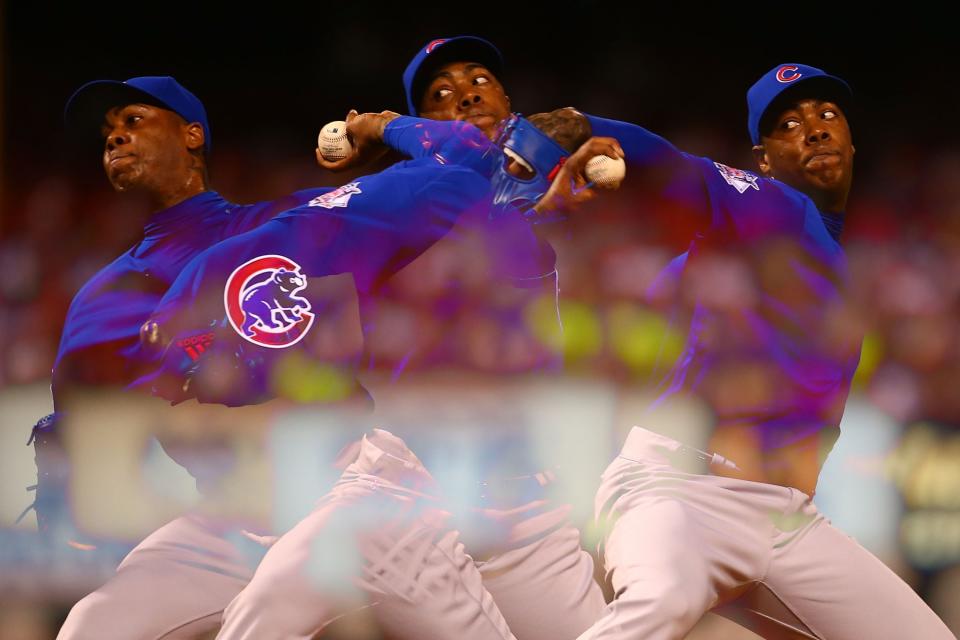
Standing on the cusp of the biggest data revolution in baseball since the Moneyball era dawned is thrilling, and here we are, with Major League Baseball’s Statcast system capturing anything and everything and giving us a deeper knowledge of the game than we’d ever know.
This is something to celebrate, not revolt against. The eggheads are not taking over; they’re simply here to enhance the game. And for those who prefer ignorance, hey, cool, do you. But when there’s a new world out there, one to be explored and dissected, it seems awfully closed-minded, no?
Here is that world distilled to 25 little nuggets. There are more. Tens of thousands more, discovered by people far smarter and more enterprising than I. This is simply an introduction, with help from the good people at Statcast, FanGraphs, Baseball Prospectus, Baseball-Reference, Brooks Baseball and others. They are the lifeblood of the industry of brains that hasn’t deserted the public for front offices.
One quick acknowledgment before you delve in: A lot of these numbers come in small sample sizes. Some say nothing about a player’s future production, his skills, his long-term prognosis, his PSA score, his good/bad cholesterol or his terrible taste in beer. This is supposed to be fun. So let’s have some with 25 Things You Didn’t Know About Baseball.
1. Seth Lugo’s curveball is a vertical tornado.
Last year, when Statcast started a more accurate tracking of the spin rate of pitches, only 26 curveballs turned at least 3,300 rpm. Then came Seth Lugo, he of the curveball that did this in his debut for the New York Mets.

That was a 3,485-rpm spinner that Anthony Rizzo swung through before it bent and hit him on his back foot. When you’re striking out on a pitch that should automatically place you on first base, you’ve swung at a good pitch. And in the world of curveballs, while spin rate isn’t everything, it tends to highlight a potentially dominant pitch. The previous spin-rate king, Garrett Richards, had an extremely well-regarded breaking ball. Jeremy Hellickson’s curve isn’t quite as good as his changeup, but it should help him age well.
The 26-year-old Lugo finds himself alone among curveballs. His average spin rate on the 125 curves he has thrown: 3,323, nearly 150 rpm higher than the next best. On Aug. 30, poor Xavier Scruggs struck out on the single nastiest curveball of the PITCHf/x era, a 3,498-rpm whirlybird.
Of the 796 pitches Lugo has thrown, 76 have been 3,300-rpm-plus curveballs. The rest of the major leagues this year has done so 34 times. Not bad for a 34th-round pick who might save the Mets’ season.
2. Aroldis Chapman throws harder than anyone ever, and he is throwing harder than he ever has this year.
Chapman is baseball’s great case of the cognitive dissonance in trying to separate a person’s immense talent from his personal issues. So keeping in mind the gravity of the allegations against Chapman and the suspension he served because of them, let’s dive into his incredible left arm.
He has thrown 710 fastballs this year. The average velocity on them is 100.4 mph, a fraction of a tick higher than the 100.3-mph record he set two years ago. Of Chapman’s 710 fastballs, 496 have registered at 100 mph or higher. Twenty-nine other pitchers this year have thrown a pitch at least 100.
Bumping up to 101 winnows the field a bit. Chapman has 339 pitches at 101-plus. Every other pitcher in baseball combined has thrown 227 pitches at 101 or harder (and most of those, in fact, are from just one guy, who we’ll talk about soon).
Get to 102, and it really thins out. Except for Chapman. More than a quarter of the fastballs he throws, 202 total, have been 102-plus. Since 2008, the rest of baseball has gone over 102 mph only 104 times. Chapman and 103 mph this season: 95 times, compared to one for everyone else. Nobody throws 104, except for Chapman, who has exceeded it 23 times. And he even exceeded 105 this year, tying his single-pitch record at 105.1 mph.
We are dealing with a unique specimen here. Unique, incredible and rarely anything close to challenged, until this year.
3. Chapman finally has company in the 100-mph-for-a-season club.
Mauricio Cabrera, 23 years old, 6-foot-3, 250 pounds, arrived with the Atlanta Braves on June 27. And all he’s done ever since is average 100.1 mph on his fastball, the fastest palindrome possible. Just as impressive, Cabrera has the biggest changeup in baseball, averaging 91 mph. How hard is that? It’s faster than the average fastball of 169 pitchers who have thrown at least 10 innings this year, including Madison Bumgarner, Julio Teheran, Masahiro Tanaka and Felix Hernandez.
4. The best throw from the outfield this year is harder than any throw from the mound ever.
Step aside, Chapman, Cabrera and other RPG launchers. The best arm in baseball belongs to … Aaron Hicks. OK, so it’s with some momentum behind it, but still. Look at this throw. No, seriously, look at this thing.
Yonder Alonso hits a pretty deep fly ball, and after a bit of a running start, Hicks takes a crow hop and lets it eat. And off it goes, at 105.5 mph, to nail Danny Valencia at the plate. Statcast is cool for a lot of reasons, but getting to quantify a throw like this – that’s certainly one of the best.
Hicks, by the way, has the highest average velocity on throws from the outfield. For starting outfielders, it’s Pittsburgh’s Starling Marte. In the infield, Alexei Ramirez’s 95.9 mph is the highest, while Washington’s Danny Espinosa averages 91 mph on throws deemed competitive. The Yankees’ Didi Gregorius has the second-best thrown and second-highest average.
5. If you like the Cubs’ offense and pitching, you should absolutely love their defense, because it’s the best of their three facets.
Defensive Efficiency Rating is a fairly simple metric, though it’s straightforwardness and utilitarianism represent its greatest appeal. Here’s how it works: Take every ball in play turned into an out, divide it by every ball in play and voila, DER. The average is somewhere in the .700 range. The Cubs, on the other hand, are making outs unlike any team we’ve seen in decades.
Their DER is .749. The last team to turn balls in play into outs like this for a full season was the 1975 Dodgers. It’s been more than four decades since we saw a team as good at making outs as the Cubs – and it should be noted they have employed the fewest shifts of any team in baseball this season. The Cubs’ DER dwarfs the next-best, the Blue Jays and Dodgers, each at .716. And they’re nearly 10 percent better than the Diamondbacks, who put the DER in deplorable at .678.
6. The Red Sox are going to break the record for fewest sacrifice bunts in a season.
This shouldn’t be a surprise, seeing as they play in the American League, boast a deadly offense and it’s 2016, but Boston’s aversion to the sacrifice is impressive. In 152 games, they’ve laid down six sacrifice bunts. The record for the fewest in a season: nine, by the 2005 Rangers.
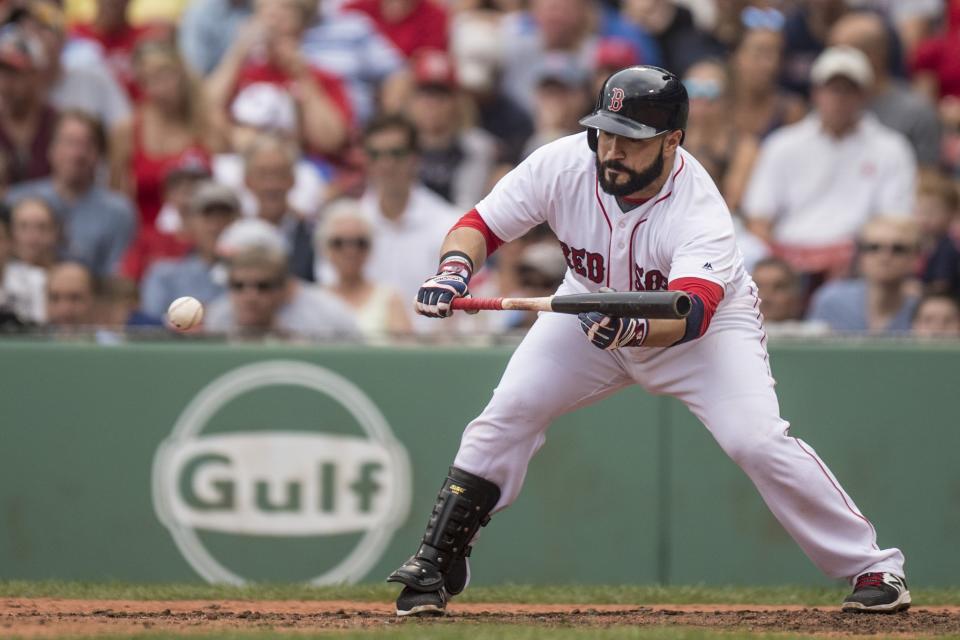
If there is a threat to the record, it rests on the bat of Sandy Leon. He has half of the Red Sox’s sacrifices this year. Please, Sandy Leon. Save the bunting for the postseason. Please allow your entire team to finish the season with fewer sacrifices than 27 individuals this season, including Max Scherzer, whose 13 more than doubles all of the Red Sox’s.
7. The Brewers, the base-stealingest team in half a decade, take crazy leads.
One of the best parts of Statcast is it can measure just about anything on a baseball field, and that includes the distance, to the inch, of a lead off a base. At the moment a pitcher makes his first move to the plate, Milwaukee runners who attempt a steal average 12.4 feet off first base. Toronto is next best at 12.1 feet, whereas, the A’s and Orioles average a mere 10.2 feet. In base stealing, where a foot is like a mile and a fraction of a second like an hour, these minuscule advantages mean the world, and the Brewers have 168 steals – 32 more than the next-best team – because of them.
8. Speaking of the Orioles, they are the slowest, most plodding team ever.
With Baltimore, the lead-off issue is not all that acute, seeing as the Orioles run less than any team in history. The Orioles have attempted 28 stolen bases this season. The record for fewest attempted steals in a 162-game season is 36, from the 1964 Red Sox. Baltimore will smash this. It may even best the 1934 New York Giants, who went just 32 times.
Twenty-two players alone have tried to swipe more bags than Baltimore. And 28 actually have more steals than Baltimore’s 17. The Orioles’ team leader is Joey Rickard. He has four steals.
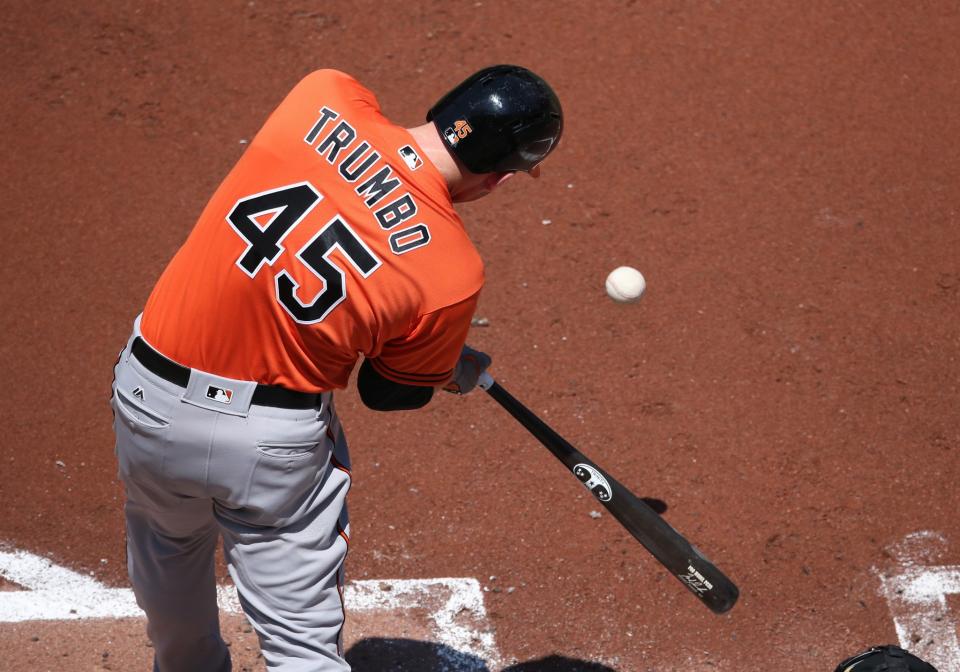
Tortoise-like that may seem, it gets even more lumbering. The Orioles have six triples this season. As in, six. The Indians and Giants tripled three times in one inning this year. In 1897, New York Giants third baseman Bill Joyce hit four triples in one game. The Orioles have managed six – one more time: six – in 5,704 plate appearances, which works out to approximately never. The previous record for fewest in a 162-game season is by the 1998 Orioles, who managed 11. And that’s tied with the strike-shortened ’81 Orioles. A dozen individuals this season have more triples than the Orioles, including Trea Turner, in fewer than 300 plate appearances.
Of course, there’s a reason these O’s don’t run: They hit bombs. Their 238 lead the major leagues. They’re on pace for 253, which would be fifth all-time. The lesson, as always: It’s Baltimore, gentlemen. The baseball gods will not save you. But home runs will.
9. In addition to not running, the Orioles looooooove to swing.
Well, not all the Orioles. Actually, Kansas City swings more than any team, at 49.3 percent of the pitches it sees. Two Orioles in particular, though, cannot help themselves. At a 60.8 percent swing rate, Adam Jones is whacking at the most pitches since Delmon Young in 2007. And not far behind him is Orioles second baseman Jonathan Schoop, at 60.4 percent. Both trail the god of impatience, Randall Simon, who one season swung at 63.6 percent of all pitches he saw.
10. Pitchers do not want to throw Mark Trumbo a fastball.
More than two-thirds of Trumbo’s 43 home runs this season have come on fastballs. He’s hitting .322 and slugging .811 against them.
Pitchers love throwing Angel Pagan fastballs because he’s hitting .305 and slugging nearly .450 against them. Uh. That doesn’t make sense. Sometimes scouting reports are a bit out of date.
Here are the five main pitches in arsenals and the players who see them the least and the most.

11. Chris Young’s fastball wasn’t just bad. It was historically bad.
Young’s average fastball floats in around 88 mph, a good tick and a half up from last year and the hardest he has thrown in nearly a decade. He’s really a two-pitch guy these days, and with his slider something of a nothingburger this year, too, hitters have sat on his fastball to great delight. Young has allowed 28 home runs in 85 innings this year. That is somewhere between impossible and super impossible.
It’s no surprise, then, that Young’s fastball has been the worst, as deemed by FanGraphs’ Pitch-Type Linear Weights. Don’t run in fear from the fancy name. As described in 25 Things past, FanGraphs assigns a win probability to every pitch a player sees or a pitcher throws. If a batter takes a ball on a fastball, his fastball score improves slightly. If he hits a home run off a curveball, his curveball score jumps. If he grounds into a double play on a slider, his slider score drops. Same for pitchers. Slider for a strike: good for the slider total. Fastball hammered for a triple: yikes for fastball.
There is a very good reason these numbers are seen by sabermetricians as total bunk: They are taken in a vacuum. They don’t account for fielding or pitch sequencing. They are strictly, simply what happens on each particular pitch, and thus they have next to no predictive value. In other words, this is like sabermetric Pop Rocks.

There have been worse individual fastball seasons than Young’s, but the fact that his came in those 85 innings means his per-fastball numbers are worse than any pitcher with at least 65 innings in the PITCHf/x era, now well over a decade. The reason for the 65-inning threshold: Usually pitchers that bad don’t get to throw at least 65 innings in a season.
12. Throw Mike Trout sliders.
Trout is the best hitter in baseball against curveballs, the best against cutters, fifth best against fastballs and 27th against changeups. Against sliders this season, though, he actually has a negative linear weight value. I hope this does not lead to a headline: TROUT CAN’T HIT SLIDERS, SHOULD NOT BE MVP.
Here are the best and worst hitters for each pitch.

13. The National League MVP frontrunner is among the worst in baseball at something that’s supposed to be legitimately important.
So, opposite-field hitting. Super vital, right? Gonna win D.J. LeMahieu a batting title and all. Check out this line hitting oppo: .184/.184/.230. Alibi-less ugly. And it belongs to Kris Bryant this season.
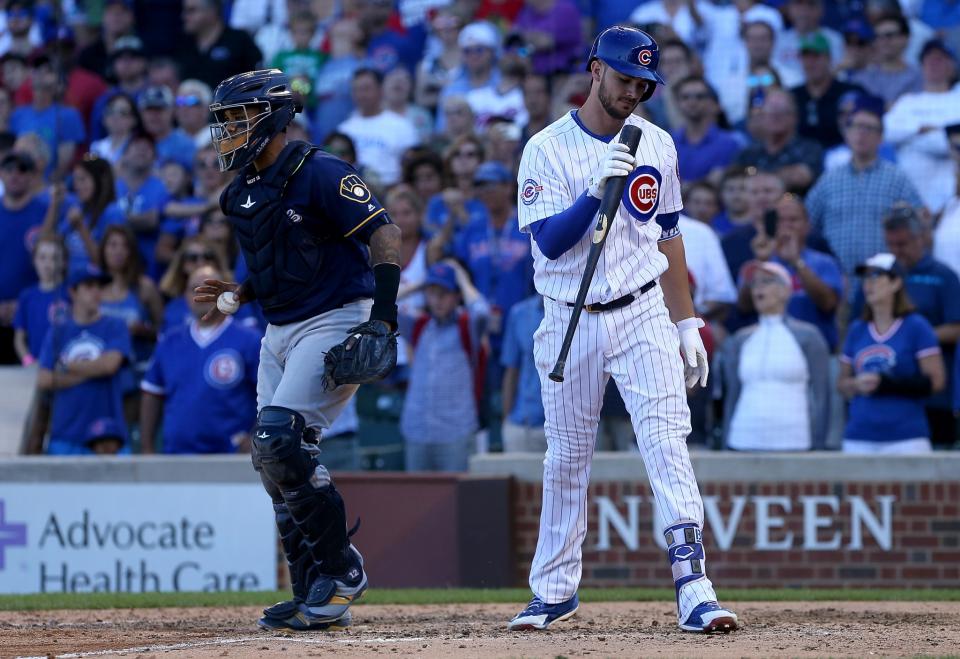
The Cubs’ third baseman is almost a certainty to win the NL MVP award, and he deserves it in spite of having the second-worst OPS of any hitter in baseball to the opposite field. (Congratulations, Derek Norris, for your parenthetical crowning as the worst.) How is Bryant so prolific when he can’t go the other way? Well, he pulls the ball better than anyone, hitting .447, slugging .965 and launching 29 of his 38 home runs.
That may be the scariest part. Bryant will be only 25 next season and has plenty of time to make adjustments that allow him to maneuver his big frame and go the other way. If he makes that evolution … yikes.
14. Step aside, Giancarlo Stanton, there’s a new exit-velocity king
Ever since MLB started measuring exit velocity, there was Giancarlo Stanton and everyone else. And when it comes to the upper reaches, nobody comes close to Stanton. Twenty-three balls have come off his bat at 115-plus mph this season. The rest of baseball has 45.
Only one of those is from Nelson Cruz. He doesn’t hit the ball as hard as Stanton at the top end. He just does so more consistently. Cruz’s average exit velocity this season is 95.8 mph, better than Stanton’s by more than half a mile per hour. There’s also one player in between Cruz and Stanton: Yankees rookie Aaron Judge at 95.5 mph, though that’s on just 42 balls measured.
15. Giancarlo is not the king of the long home run, either.
Another due some explanation: Yes, Stanton’s 504-foot shot in Colorado that looked like it was blasted from Cape Canaveral is the biggest this season.
The longest average, however, belongs to Carlos Gonzalez, whose home runs have averaged 427 feet. Stanton’s next at 422, tied with Trevor Story.
16. Bartolo Colon is throwing more fastballs than any starter ever.
And you thought it was obvious last year when Big, Bad Bart tossed his four-seam fastball 83.8 percent of the time. Or in 2014, when it was 82.6 percent. Or 2013, his highest year, at 85.5 percent. Since then, his velocity has dipped 2 mph. He sits at 87.9 mph. And he keeps throwing the thing anyway, 89.4 percent – !!! – of the time this season, complemented by a slider (5.9 percent) and changeup (4.6 percent) that are little more than show-me pitches.
The lesson, as always, is that Bartolo Colon doesn’t give a damn.
17. Three starters this year threw their curveballs more than any starter on record.
Houston starter Lance McCullers spins arguably the best curveball in the game, an 85.2-mph hammer that’s the hardest out there by a starter and just 1 mph slower than Craig Kimbrel’s. McCullers threw it 49.5 percent of the time before he hit the DL with elbow soreness.
Rich Hill is throwing his 42.7 percent of the time. It’s the opposite of McCullers’, big and slow and parabolic at 74.1 mph. It’s pretty awesome. He spent plenty of time on the DL, too.
Among qualified starters, Boston’s Drew Pomeranz is on his way to setting a record for curveball usage at 39.3 percent. The previous high: Wandy Rodriguez, annually a curveball standard bearer, at 37.2 percent.
18. The hardest average slider ever is being thrown by someone who learned it this year.
Matt Bush was the No. 1 overall pick as a shortstop in 2004, ended up in jail after substance-abuse problems and returned to the Texas Rangers’ organization with two pitches: a fastball and curveball. They got him to the big leagues.

Bush’s slider, which he just started throwing this season, may make him one of the best relievers there. He throws it at 91.3 mph. Maybe it’s not as impressive as Noah Syndergaard’s, because Syndergaard is a starter and still manages to pump it in at 90.9 mph next to his average fastball of 98 mph, also a record for a starter. Which is great until you see the next-hardest slider is 89.2 mph from Stephen Strasburg (on the DL) and after that Matt Harvey (DL) and then Jacob deGrom (DL) and Garrett Richards (DL), and for the love of god stop throwing hard sliders. The next five pitchers on the list, for what it’s worth, are all healthy, so there’s that.
19. Zach Britton did what once seemed impossible: cross the 80 percent groundball threshold.
Only 10 times ever in recent years has a pitcher exceeded a 70 percent groundball rate. Now Britton, the best reliever in baseball this year and dark-horse AL Cy Young candidate, is at 80.8 percent – beating his record 79.1 percent last season. For perspective, the second-best groundball rate this year: Marc Rzepczynski at 68.8 percent.
Long live Zach Britton, the greatest enemy of grass since Dr. Alfred Carroll.
20. Joey Votto didn’t pop out to the infield again this year, and there is no single better statistic in baseball than his career pop-up numbers – except perhaps another person allergic to the pop-up.
Votto’s appearance in 25 Things is a guarantee, and he again has validated it by not popping out once in 632 plate appearances. If he can make it another dozen games, it will mark the second time Votto has gone an entire season without a pop-out. For perspective, Todd Frazier leads MLB with 36 this season. It’s not just big-power guys who do it, though. Some of the very best players in the game dot the leaderboard: Manny Machado and Xander Bogaerts (31), Mookie Betts (28), Nolan Arenado (27), Kris Bryant and Brian Dozier (25).
Popping up isn’t a sign of ineptitude, per se, but what Votto has done – 15 career pop-ups in 5,389 plate appearances – is absurd. Thing is, as I was tallying Votto’s times at the plate, I noticed a name I hadn’t before: Howie Kendrick’s. He, along with Votto and Joe Mauer, are the only pop-up-less hitters this year. And it turns out Kendrick’s numbers are even more impressive than Votto’s.
Not only hasn’t he popped up this year, Kendrick didn’t last year or in 2014, either. That’s three years and more than 1,500 plate appearances without a single pop out. Over the last three seasons, Dozier has popped out 101 times. But not Kendrick, who in his career, like Votto, has 15 pop-ups – and in 5,423 plate appearances, more than Votto.
21. Speaking of Canadians, until further notice, Michael Saunders shall be referred to as Chokey McChokerson.
FanGraphs uses a metric called “Clutch,” which measures how a player does in high-leverage situations vs. what he does in those with lesser leverage. In essence, if a guy embodies the hits-when-it-doesn’t-count label, this actually will say so. And only one player has hit less when it counts in the last 25 years than Saunders.
His Clutch score is -3.27. FanGraphs calls a score of -2.0 or worse “awful.” Only Josh Reddick at -3.83 in 2012 was worse than Saunders in the last quarter century. His .257/.340/.490 line looks rather good, even with an awful second half. Even then, though, it oversells him considering how little Saunders has done at the most important times.
22. Forget Billy Hamilton and Trea Turner. Byron Buxton is the Fastest Man in Baseball.
The former No. 2 overall pick and top prospect in the game is finally turning all the tools that left evaluators frothing into production. And his wheels may be the best of them all. Statcast tracks runners’ speed to and from every base, and Buxton holds the best times for a right-handed hitter going home to first, second and third.
Home to first, Buxton ran 90 feet in 3.72 seconds. That’s not on a bunt. That’s a swing from the right side. And that is patently absurd. The second-fastest time belongs to Buxton and Hamilton, tied at 3.84 seconds. Turner’s fastest: 3.91 seconds.
Going to second, Buxton is even more dominant. He owns the eight fastest times in baseball this year, with 7.3 seconds his fastest. Hamilton’s best is 7.56 and Turner’s 7.6 seconds.
And home to third, Buxton has the top three and five of the top eight. His fastest: 10.69 seconds. The next best was Keon Broxton’s 10.89 seconds. Turner’s quickest: 11.14 seconds
By the way, Buxton is hitting nearly .300 with seven home runs and a .691 slugging percentage in September. He’s still just 22. If his patience at the plate can catch up with his power, his glove and his legs, he’s one of the best players in baseball – and we may just be seeing the start of it now.
23. A geezer still hits the ever-loving crap out of the ball.
David Ortiz is 40 years old, 10 days and however big of a playoff run the Red Sox have from retirement, and among all the amazing things he has done in his farewell, this might be the most impressive: Nearly every other ball he puts in play can be classified as “hard hit.”
Now, this isn’t exactly a purely objective measure. The great people at Baseball Info Solutions, though, use a proprietary metric to measure how hard a ball was hit beyond exit velocity alone and lump it into one of three buckets: soft, medium and hard. Since they recalibrated the measure in 2010, no player has matched Ortiz’s hard-hit rate this season: 46.3 percent. The previous best: Miguel Cabrera at 45.1 percent, when he hit .348/.442/.636 and won his second straight AL MVP.
24. The worst fielder in baseball this year has been a guy who was MVP three years ago.
Look, my feelings about defensive metrics haven’t changed much, but scouts have mused all season that something isn’t right with Andrew McCutchen, and the numbers on both sides of the ball bear that out. His .255/.335/.434 slash line represents career lows in all three categories, and worse is the Defensive Runs Saved metric, which rates him minus-23 runs, the worst figure in the big leagues. Ultimate Zone Rating, the other major defensive metric, has McCutchen as the third-worst fielder in the major leagues, ahead of only Alexei Ramirez and Jake Lamb.
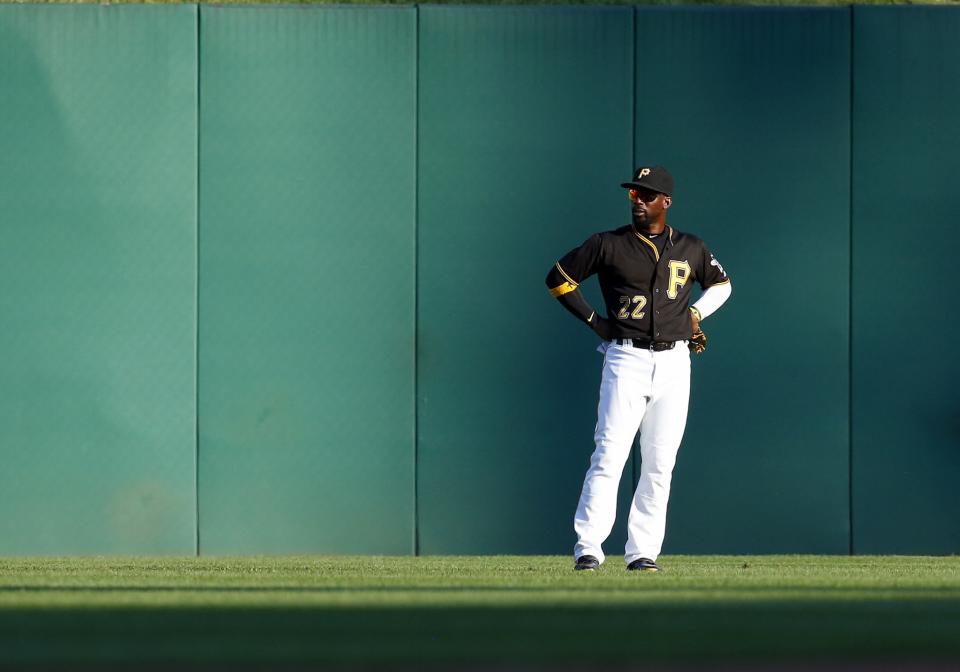
Any worst-fielder list that doesn’t include Arizona right fielder Yasmany Tomas, of course, is not worth a whole lot. And the public metrics, which should get better as more Statcast data is released, do leave something to be desired when they say Robinson Cano has made 137 plays out of his so-called zone, the second most of any position since defensive tracking began and more than three-quarters of all his plays this season. The only conclusion is this: Cano’s zone is the size of his shadow.
25. If your name ends in “hris Davis,” you are barreling the ball.
Statcast just came up with a new metric it’s calling “Barrels,” which covers balls hit 100-plus mph at a certain launch angle. These tend to end up as doubles and triples and home runs. The top two at barreling the ball: Oakland’s Khris Davis (18.4 percent) and Baltimore’s Chris Davis (18.3 percent). Next are Giancarlo Stanton and Mark Trumbo, who will be changing their names to Chriscarlo Davistanton and Markhris Trumbavis.


